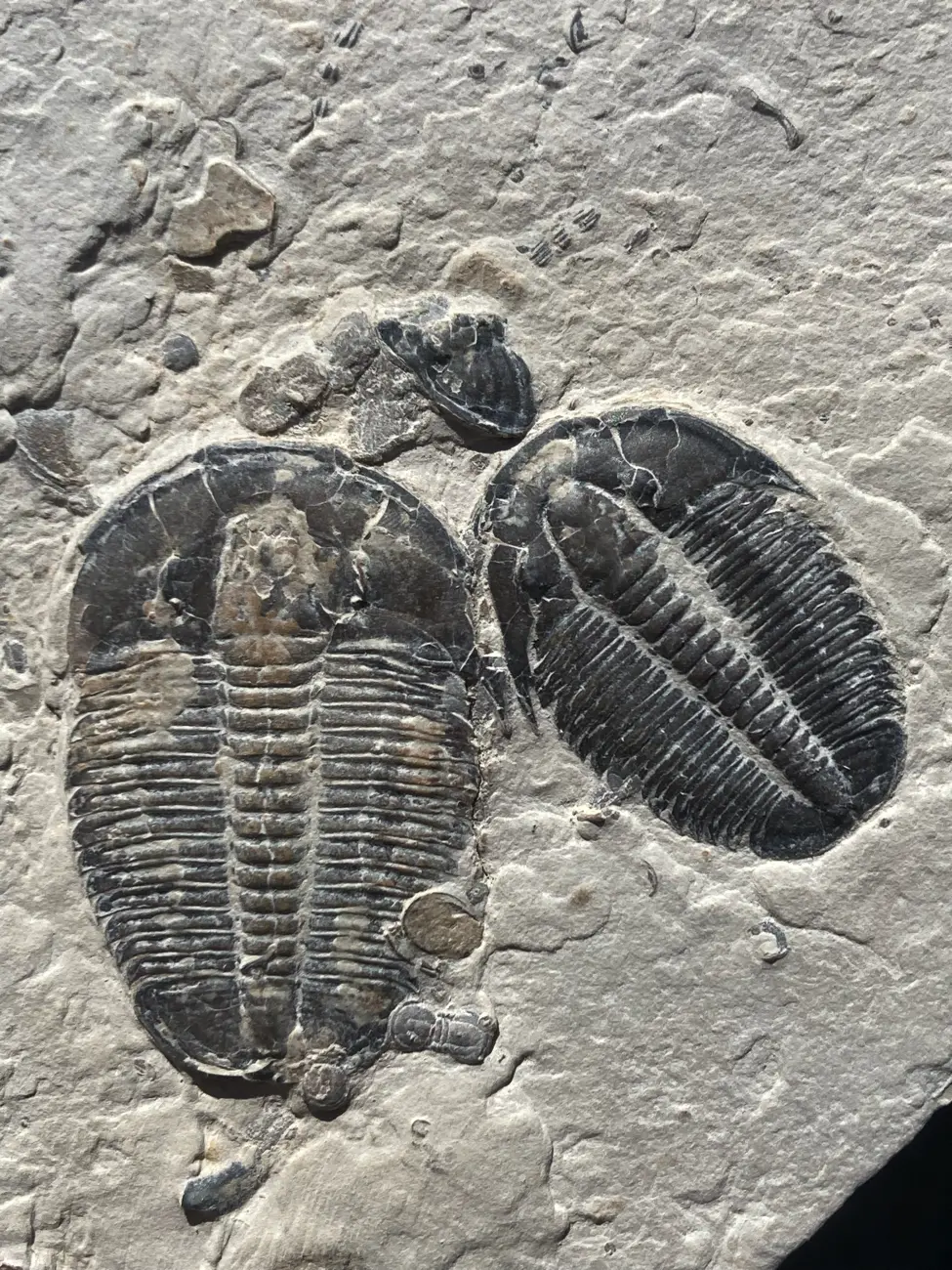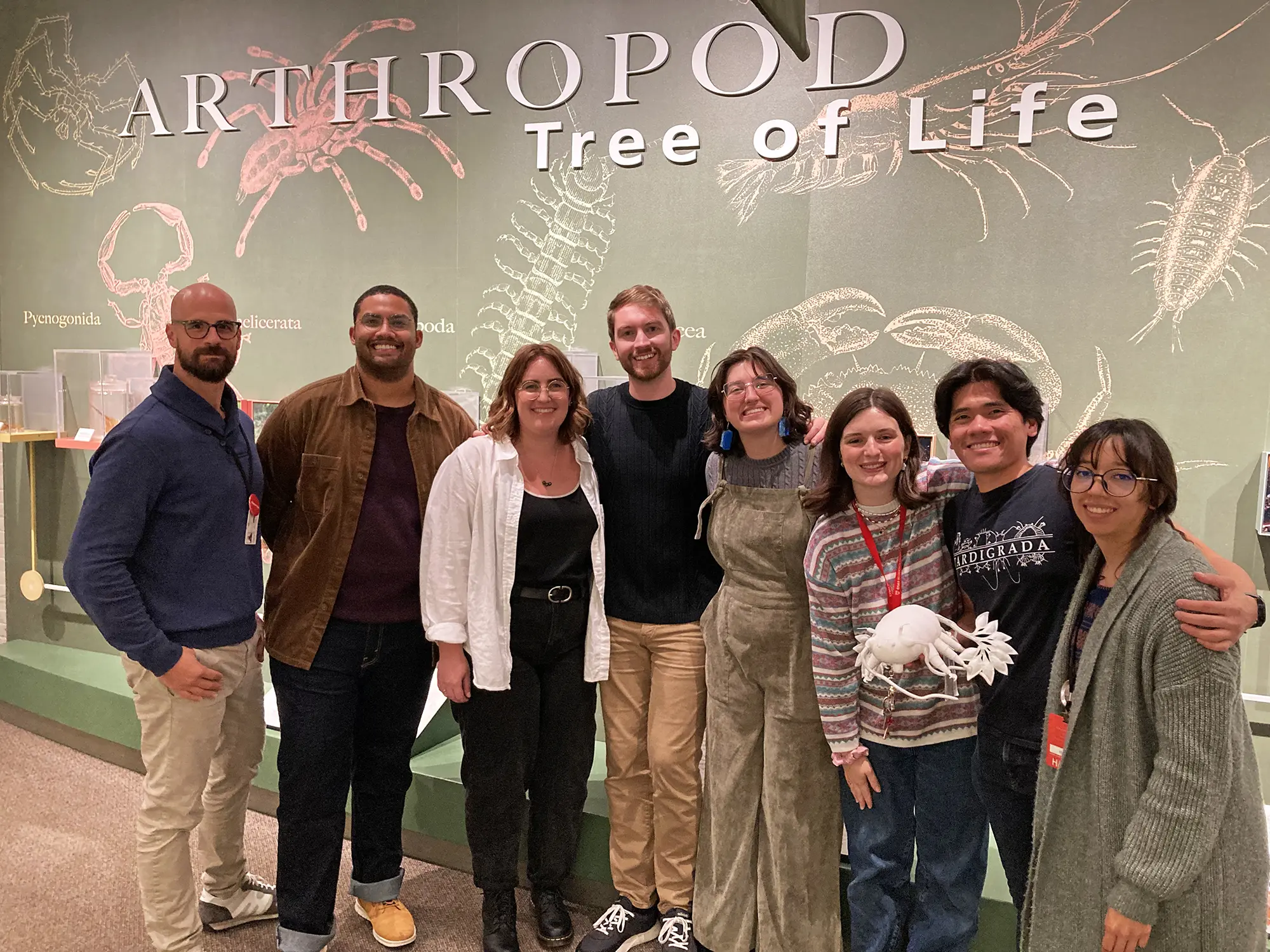Javier Ortega-Hernández is an associate professor of organismic and evolutionary biology at Harvard and serves as the curator of invertebrate paleontology at the Museum of Comparative Zoology. He is also an affiliate of the Department of Earth and Planetary Sciences. Ortega-Hernández’s research examines the origins and evolution of invertebrate life, with a focus on the remarkable biodiversity that emerged during the Paleozoic Era. He is especially interested in the early history of molting animals (Ecdysozoa), including the extinct ancestors of modern arthropods (insects, spiders, crustaceans), tardigrades (“water bears”), and velvet worms. By combining traditional fossil analysis with advanced imaging techniques, his research explores the origins of major animal groups and the evolutionary events that helped shape life on Earth more than 500 million years ago.

1. Your research focuses on animals that lived more than 500 million years ago. What draws you to study ancient life, and why is it important for us to understand early creatures today?
People are intrinsically drawn to origin stories, ranging from a beloved fictional character to the first moments of the known universe. For me, reconstructing the early evolution of animals and the marine biosphere is an expression of that innate interest. Most of the major animal groups, or phyla, we see today originated approximately half a billion years ago as part of the so-called Cambrian explosion, making it one of the most exciting time periods in the history of life on Earth. However, many of these early animals were rather uncanny in their appearance by modern standards. The bizarre nature of Cambrian life makes them particularly fascinating and also offers a good challenge when trying to understand their broader evolutionary significance and how they relate to living species. The Cambrian explosion also marks a critical turning point in the ecology of the biosphere, shifting from a Precambrian microbial world where most life was unicellular and into the Phanerozoic Eon teeming with complex multicellular animals, plants, and fungi and intricate food webs. A good deal of how we perceive living organisms can be traced to the Cambrian, so this period is fundamental for understanding the world we live in today and the many species we share it with.
2. How do modern imaging technologies (e.g., micro-CT scanning, synchrotron radiation) enhance your ability to study the internal anatomy of exceptionally preserved fossils, and what limitations remain?
Each technological innovation is a new tool to extract a little bit more information from a given fossil depending on its particular mode of preservation, far beyond what could be learned from the traditional (but still necessary) method of staring at a specimen really hard for a long time. The application of these tools has led to a better understanding of the processes that control fossilization under certain depositional environments, for example the types of sediment needed for preserving soft tissues such as eyes, guts, and brains, or insights into how the fossils have been affected by heat and pressure during the rock cycle. It is now possible to learn about complex ecological adaptations, such as disruptive coloration, thanks to the preservation of melanosomes, and that is without even mentioning the enormous amount of three-dimensional morphological information available in the fossil record. However, similarly to how a tool is best suited for its intended purpose, some fossils can only be analyzed in some ways but not others. For example, fossil remains that have become pyritized (i.e., replaced by small particles of “fool's gold” produced by free-living bacteria) are well suited for X-ray computed tomography because they are enriched with dense iron and can reveal intricate aspects of the three-dimensional morphology hidden within the rock matrix. At the same time, the iron in the pyrite overrides the original chemical signal of the body tissues. One cannot have it all, but paleobiologists are a crafty lot, so every new technology opens another window that can help us better understand extinct organisms as part of a much larger evolutionary puzzle.
3. You've worked on understanding how modern animals like insects and spiders are related to their ancient ancestors. What’s one surprising thing you’ve learned about the evolution of life?
A common misconception is that the evolution of life has followed a straightforward path in which species went from small to big, and from simple to complex. While this may be partially true in the broadest of senses, the fossil record demonstrates time and time again that ancient organisms were in many cases considerably more complex than their living counterparts in different ways. Take for example the velvet worms, or onychophorans, a relatively inconspicuous but charismatic group of exclusively terrestrial molting invertebrates that resemble a multi-legged worm and that shoot slime for capturing prey. All modern velvet worms share the same basic habitat in tropical rainforests around the world and have the same ecology as ambush predators of small animals. Although they vary considerably in terms of their reproduction strategies, if you have seen one velvet worm, you have seen them all—just imagine them in various colors. However, the Cambrian ancestors of velvet worms were much different. They were all marine, and although they also resembled legged worms, many had different types of armor on their bodies, ranging from honeycomb-textured plates to spiked collars, and would either feed by scavenging on the seafloor or filter organic matter from the water column with their extravagant feathery limbs. The evolutionary history of velvet worms clearly shows that this group has become less diverse in their overall appearance and mode of life, which would be impossible to know based on their living species alone. And in terms of body size, many animal groups that are microscopic today, such as water bears (tardigrades), had large-bodied ancestors during the Cambrian that became miniaturized as part of their history. Evolution is rarely a one-way street, and by studying animals in deep time, it is possible to witness drastic changes over millions of years.
4. The Cambrian explosion was a time when many animal groups appeared very quickly in the fossil record. Why do scientists think this happened, and what does it tell us about evolution?
Ah, this is truly the $500-million question that has teased scientists for well over 150 years! Even Charles Darwin acknowledged that the seemingly sudden appearance of animals in the fossil record was at odds with his view of evolution (through natural selection) as a slow and gradual process. Much progress has happened since then, and one of the major shifts in how we understand this conundrum is that the speed of evolution can be highly variable both in terms of morphological and genetic information. Sometimes glacially slow, others at neckbreaking pace, and often alternating between the two. The Cambrian explosion is now best understood as a period of extraordinarily rapid evolution during which practically all bilaterian animal groups originated and diversified morphologically and ecologically over a short period of time, geologically speaking of course. But why did this happen at this precise moment in Earth’s history? That is still very much open to debate. An increase of oxygen levels around the Precambrian to Cambrian boundary has been widely posited as a possible trigger for the Cambrian explosion because most animals need well-oxygenated conditions for aerobic respiration. It has also been suggested that the first cases of predation had a snowball-like effect that started an evolutionary arms race among the earliest animals, resulting in higher rates of innovation. Yet another hypothesis is that the massive input of nutrients and sediment into the oceans during the late Precambrian following the thawing of global glaciers might have facilitated a bloom of shelly animals. It is most likely that there is not a single cause for the Cambrian explosion, but that it was a combination of environmental and biological factors that came together at the right time to create an evolutionary perfect storm. However, we are still in the business of figuring out the specifics, and there is still much to learn about the timing and causes of this major event.
5. As both a researcher and a museum curator, how do you bring the story of these ancient animals to the public, especially to people who may not know much about paleontology?
One of the great advantages of Harvard is that it provides several different avenues to share our findings with the public, but also with students who might not necessarily have a background in evolutionary biology or earth sciences. As curator of invertebrate paleontology at the Museum of Comparative Zoology, I am fortunate to work with a fantastic team of curatorial staff who take care of the daily upkeep of the collections and are always ready to locate and pull specimens for teaching, demonstrations, or visitors. I also enjoy a great relationship with our colleagues at the Harvard Museum of Natural History (HMNH) and frequently work with them to set up public events and lectures. An annual favorite is National Fossil Day during the fall term, during which we bring particularly rare museum specimens that are not part of the regular exhibits, directly engage with visitors, and answer their questions. Fossils are ideal for show-and-tell, so it is easy to connect with our visitors over an intriguing specimen. The HMNH also offers a valuable avenue for setting up dedicated exhibits to showcase particular areas of research, which allows plenty of flexibility in terms of how to display our findings to make them as accessible as possible to broad audiences. As a researcher, sometimes other institutions will extend an invitation to give public lectures, which is another excellent way of reaching out to people beyond the Harvard campus. These types of public events are typically well-attended by the local community, and frequently recorded, and eventually end up online, which also helps to reach audiences that might not be able to attend in person. Finally, fieldwork and visits to other museums also offer a great way to casually share our research with curious passersby, which in some cases results in meaningful and lasting connections.










